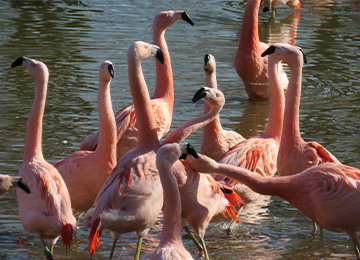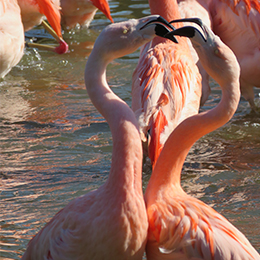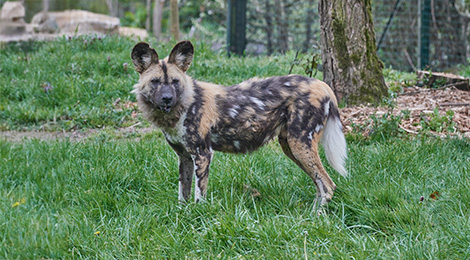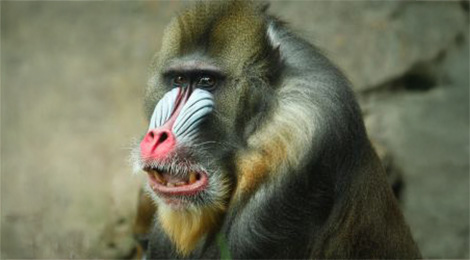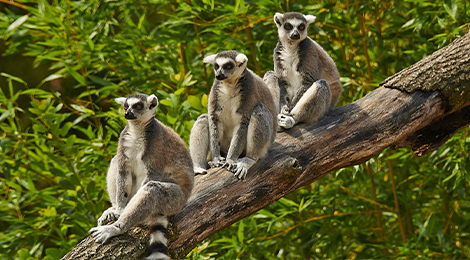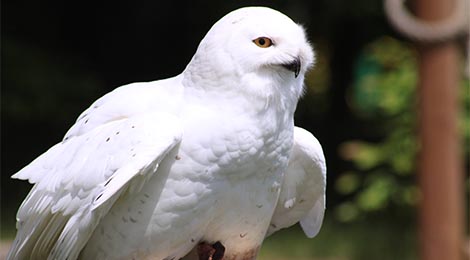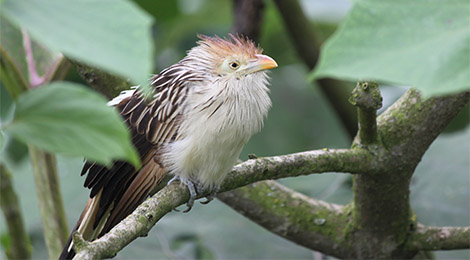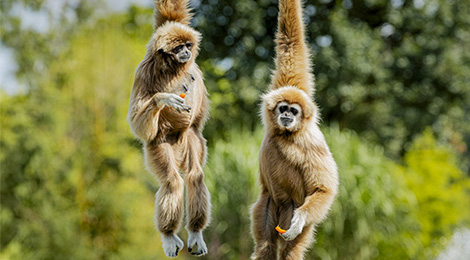An almost pink flamengo
The Chilean flamingo is very easy to distinguish from other species of flamingo, due to its greyish legs and red joints, pale pink plumage and its beak, half of which is black. It spends much of its time preening its feathers. At the base of its tail there is an oil-secreting gland, and it uses its beak to spread this oil carefully over its feathers to make them waterproof. Its webbed feet mean it can dig around in the mud looking for food and move around in shallow water, of which it is especially fond.
The Chilean flamingo is a migratory bird. Highly sociable and monogamous, it lives and breeds in large colonies, sometimes many thousand strong. All flamingo pairs build nests, comprising small clay domes about 30 cm in height, on which they will lay a single egg, or very unusually 2 eggs. Youngsters, which are covered in grey down, will feed from a secretion from the crop which is similar to mammals' milk for its first two years of life. The flamingo will then sport grey plumage for 2 years before reaching sexual maturity at around 6 years old. The young are educated in groups, with adults rounding them together in an area known as the crèche, and they are overseen by adults which take it in turns to do so. Active both day and night, flamingos spend most of their time filtering the mud with their beaks which have lamellae.
Chilean flamingos live in temperate regions, on coastlines, and in saltwater and freshwater lakes. They prefer shallow water. Chilean flamingos are often seen in the Andes mountains of Peru, Chile, Argentina and Bolivia and to the south in Tierra del Fuego, as well as in Brazil, Uruguay and in the Falkland Islands to the east of South America.
Chilean flamingos have few predators, but the destruction of their habitat and disruption associated with the presence of people are threatening their populations.
-
HabitatShallow, silty lagoons and lakes
-
Food
Seaweed, crustaceans, molluscs

The pink colour of flamingos is more or less intense depending on the quantity of carotenoid pigments in the food they eat. In some icy regions, it is not uncommon for them to find themselves icebound at night, and not until the temperatures go up again and the ice melts can they extricate themselves.
A zoological reserve populated by Asian elephants, giraffes, lions, tigers, hippos, chimpanzees, gibbons, wolves, ostriches ... Animals evolving in their reconstituted natural environment, to discover as a family.
All animals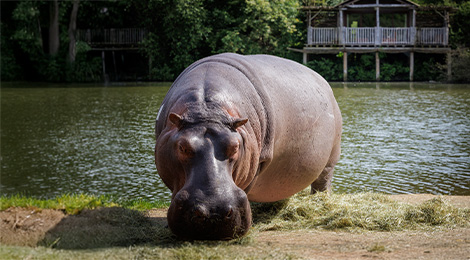
-
![]() Hippopotamus Discover animal
Hippopotamus Discover animal -
![]() African wild dog Discover animal
African wild dog Discover animal -
![]() Mandrill Discover animal
Mandrill Discover animal -
![]() Ring-tailed lemur Discover animal
Ring-tailed lemur Discover animal -
![]() Snowy owl Discover animal
Snowy owl Discover animal -
![]() Guira cuckoo Discover animal
Guira cuckoo Discover animal -
![]() Lar gibbon Discover animal
Lar gibbon Discover animal -
![]() Eurasian eagle owl Discover animal
Eurasian eagle owl Discover animal



